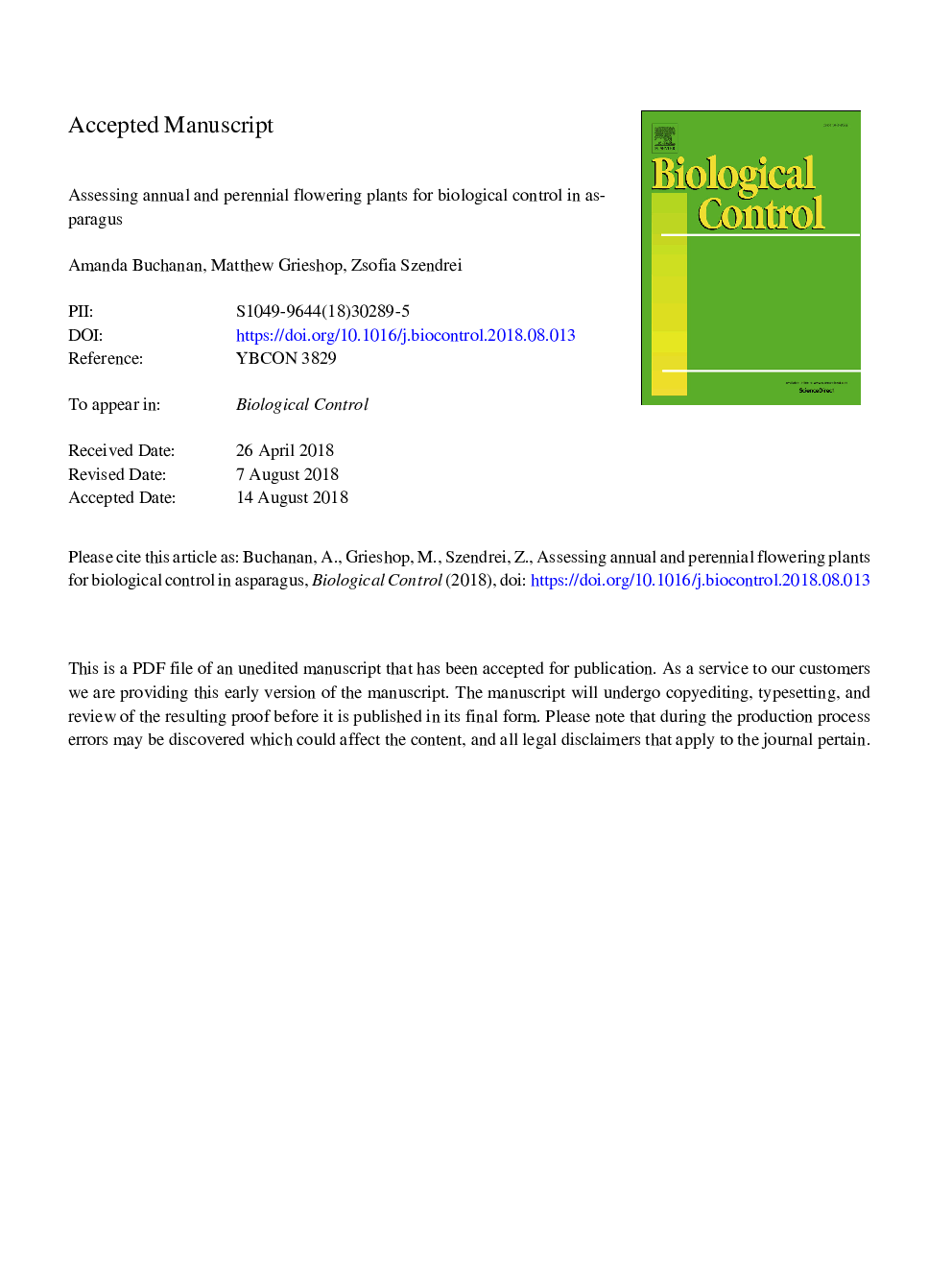| کد مقاله | کد نشریه | سال انتشار | مقاله انگلیسی | نسخه تمام متن |
|---|---|---|---|---|
| 8953080 | 1645898 | 2018 | 35 صفحه PDF | دانلود رایگان |
عنوان انگلیسی مقاله ISI
Assessing annual and perennial flowering plants for biological control in asparagus
ترجمه فارسی عنوان
ارزیابی گیاهان گلدهی سالانه و چند ساله برای کنترل زیستی در مارچوبه
دانلود مقاله + سفارش ترجمه
دانلود مقاله ISI انگلیسی
رایگان برای ایرانیان
کلمات کلیدی
ویروس پارازیتویید، حفاظت از کنترل زیستی، منابع گل، نوارهای گلدار، دشمنان طبیعی
موضوعات مرتبط
علوم زیستی و بیوفناوری
علوم کشاورزی و بیولوژیک
علوم زراعت و اصلاح نباتات
چکیده انگلیسی
Despite the progress made to date to incorporate habitat diversification in farms, implementing it effectively for biological control programs in agriculture still faces many challenges. Our goal was to screen annual and perennial flowering plant species for their attractiveness to natural enemies and herbivores, and to select promising species to be used as flower enhancements in asparagus agroecosystems. Tested perennials were generally more attractive to predators than to parasitoid wasps, which were found in low numbers during our study. Among the annual plants, sweet alyssum (Lobularia maritima L. Desv.) was highly attractive to parasitoid wasps in common garden experiments and was selected for use in flowering borders, but it was not attractive to parasitoid wasps in asparagus field trials. We did not detect any effects of sweet alyssum on asparagus miner damage or on generalist herbivore abundance in asparagus fields. Thrips abundance was reduced in asparagus adjacent to sweet alyssum, but only at the field edge. Emergence rates from excised asparagus miner pupae were low with 18% (94) surviving, of which 77 were asparagus miners and 17 were parasitoids. In summary, although flower enhancements can often provide benefit for biological control of herbivores, our current results did not support this finding, but we suggest that continued effort is made to test the potential of perennial plants as flower enhancements in this agroecosystem as they require less maintenance than annuals.
ناشر
Database: Elsevier - ScienceDirect (ساینس دایرکت)
Journal: Biological Control - Volume 127, December 2018, Pages 1-8
Journal: Biological Control - Volume 127, December 2018, Pages 1-8
نویسندگان
Amanda Buchanan, Matthew Grieshop, Zsofia Szendrei,
